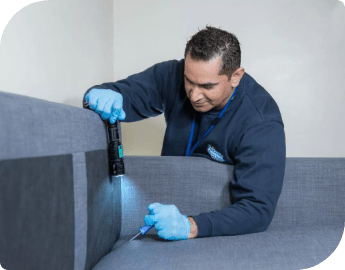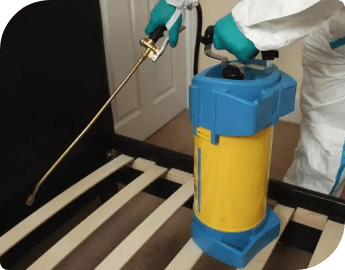What time of year do carpet moths come out?
Carpet moths are active year-round in warm, heated homes, but their activity peaks from spring to early autumn (April to September). During this time, they emerge, mate, and lay eggs. However, warmer winters and central heating create ideal conditions for moths to thrive indoors, making them a year-round problem.
What causes a clothes moth infestation?
Clothes moth infestation is caused by a combination of environmental factors and human habits. Moths are attracted to natural fibres containing keratin, like wool, silk, and cashmere, which moth larvae feed on. Infestations are often caused by soiled fabrics, dust, pet hair, or organic debris such as bird nests or dead animals. Moths thrive in dark, undisturbed spaces such as wardrobes or drawers, and warm, humid environments create an ideal environment for them to thrive.
What are the first signs of clothes moths?
The first signs of a clothes moth infestation include small, irregular holes in natural fibre fabrics like wool, silk, or cashmere. You may also notice silky tunnels, larvae or pupae (silk cocoons), frayed edges on garments, or excessive shedding of fur. Adult moths are small and avoid the light but may be spotted crawling or flying around. A musty odour in the area can also signal an infestation.
Are clothes moths and carpet moths the same?
Yes, clothes moths and carpet moths are essentially the same species, primarily the common clothes moth (Tineola bisselliella). The name difference reflects their typical habitats - clothes moths are found on clothing, while carpet moths are found on carpets and rugs. Both moth species feed on natural fibres like wool, silk, and cashmere, making all textile areas in the home vulnerable to infestation.
What is the fastest way to get rid of carpet moths in the UK?
The fastest way to eliminate carpet moths in the UK is professional heat treatment. This method raises the temperature of the infested areas to over 55°C, killing moths at all stages of life in a single session. Heat treatment is chemical-free, safe for homes with children or pets, and offers thorough eradication. Other steps to exterminate moths include insecticidal spraying and a deep cleaning of your carpets to remove moth eggs, larvae, and adult moths.
How to prevent future moth infestations in my home?
To prevent moths, store food in airtight containers and clean up crumbs frequently to eliminate potential food sources. Additionally, keep doors and windows closed at night, use insect screens, and vacuum fabrics, furniture, and carpets regularly to remove any moth eggs and larvae.
My carpets are infested with moth larvae. Now what?
If the moth larvae have decided to nest in your carpet, make sure to vacuum it as often as possible and change your vacuum bags frequently. Learn the difference between moths and butterflies so you know whether you have a serious problem.
Do you offer any discounts?
Yes, by joining the Fantastic club you will get benefits like discounted prices and other exclusive deals for a year long.
How do you charge for moth fogging?
Per job, not per hour. The price depends on the number of rooms that need to be treated and the number of visits by an exterminator.


